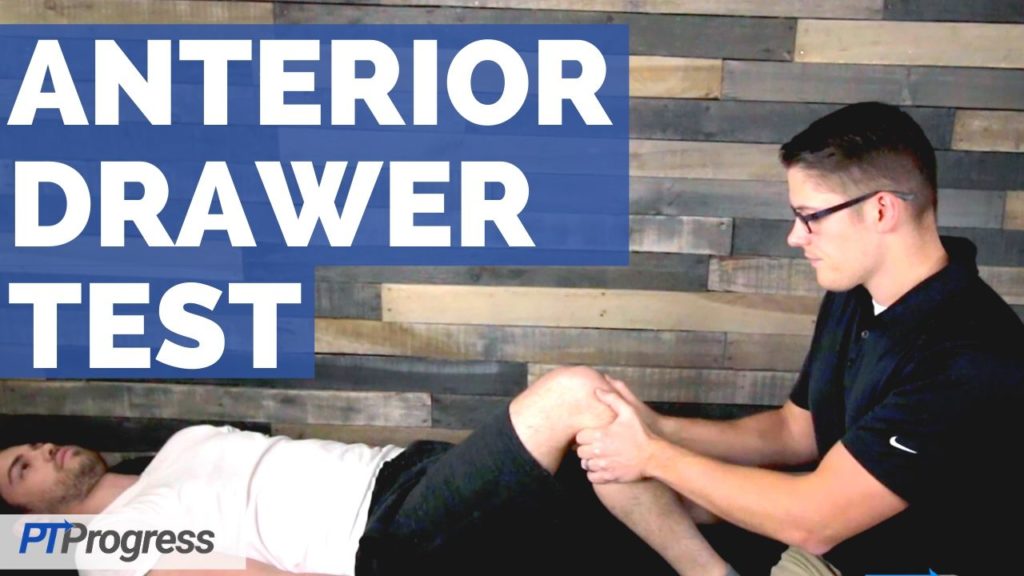Purpose: The Anterior Drawer Test is used to identify ACL tears or compromised integrity of the anterior cruciate ligament. The ACL ligament is one of four major ligaments that provide stability to the knee.

How to Perform Anterior Drawer Test
Position of Patient: The patient should be positioned in supine with the hip flexed to 45 degrees and knee flexed to 90 degrees. The patient’s foot should be flat on the table and further stabilized by the examiner’s body.
Performance: The examiner will grasp the patient’s leg just below the tibiofemoral joint line. With a firm hold, the examiner places an anterior force attempting to move the tibia forward.
How to Interpret Anterior Drawer Test
Positive Finding: A positive test occurs when the tibia translates forward or demonstrates an anterior subluxation of more than 5 mm. A positive test results in a ‘soft end feel’ as opposed to a ‘firm end feel’ in which the tibia does not translate forward, suggesting an intact ACL.
Test Accuracy / Reliability / Evidence:
Sensitivity and Specificity
Sensitivity = 0.38
Specificity = 0.81
+LR = 2
-LR = .77
Research Source: Van Eck CF, van den Bekerom MPJ, Fu FH, et al: Methods to diagnose acute anterior cruciate ligament rupture: a meta-analysis of physical examinations with and without anaesthesia. Knee Surg Sports Traumatol Arthrosc 2013; 21: pp. 1895-1903
Anterior Drawer Test Video
The Anterior Drawer Test is used to identify ACL tears or compromised integrity of the anterior cruciate ligament.
To perform the Anterior Drawer test, the patient should be positioned in supine with the hip flexed to 45 degrees and knee flexed to 90 degrees. The patient’s foot should be flat on the table and further stabilized by the examiner’s body.
The examiner will grasp the patient’s leg just below the tibiofemoral joint line. With a firm hold, the examiner places an anterior force attempting to move the tibia forward.
A positive test occurs when the tibia translates forward or demonstrates an anterior subluxation of more than 5 mm. A positive test results in a ‘soft end feel’ as opposed to a ‘firm end feel’ in which the tibia does not translate forward, suggesting an intact ACL.
Next Test: McMurray Test for Meniscal Tears

